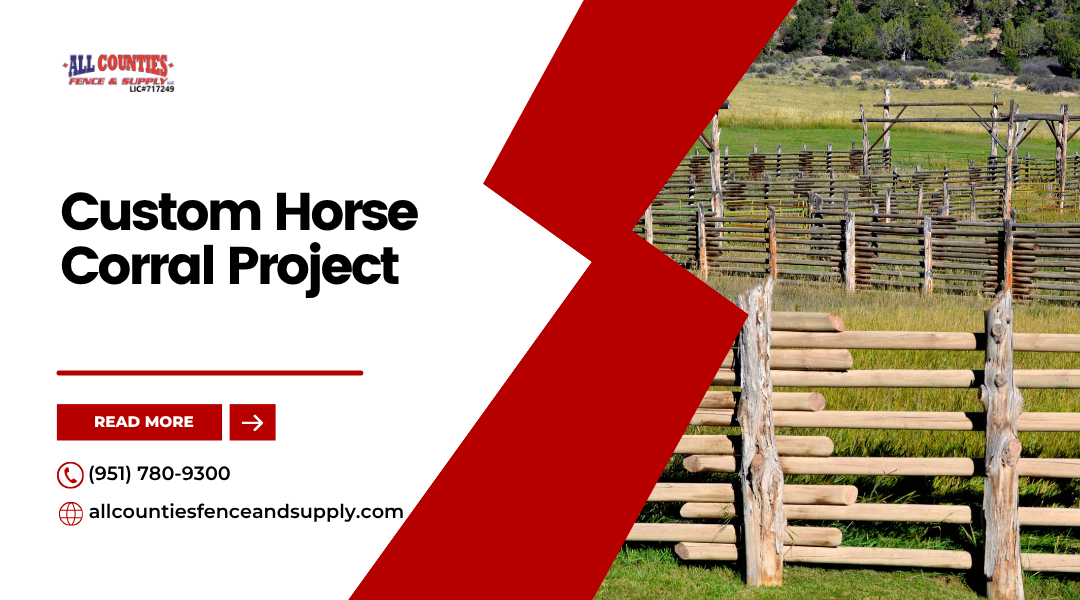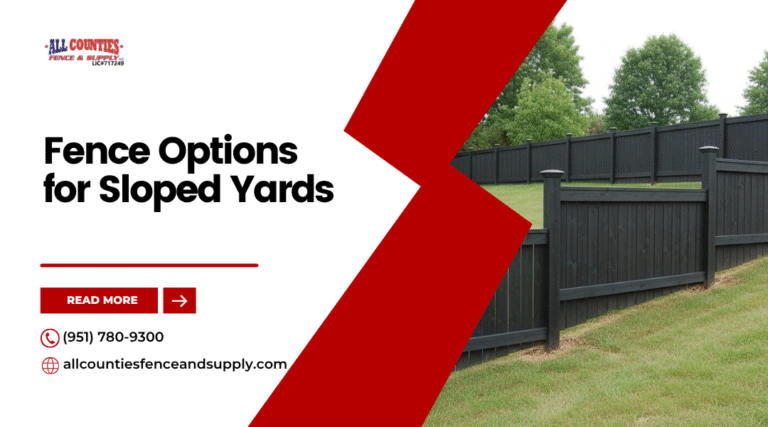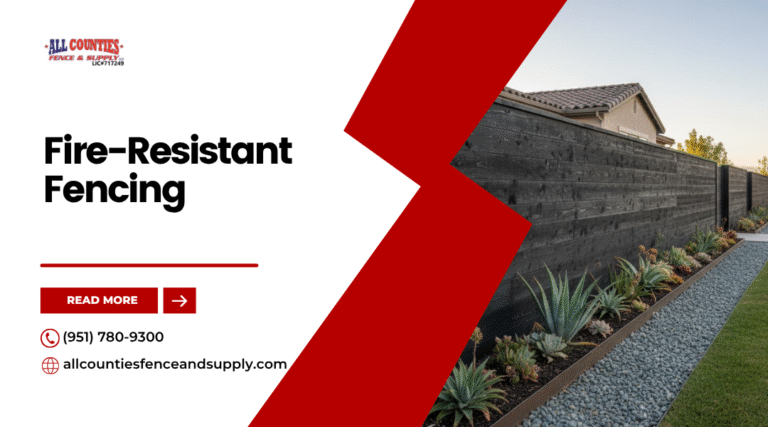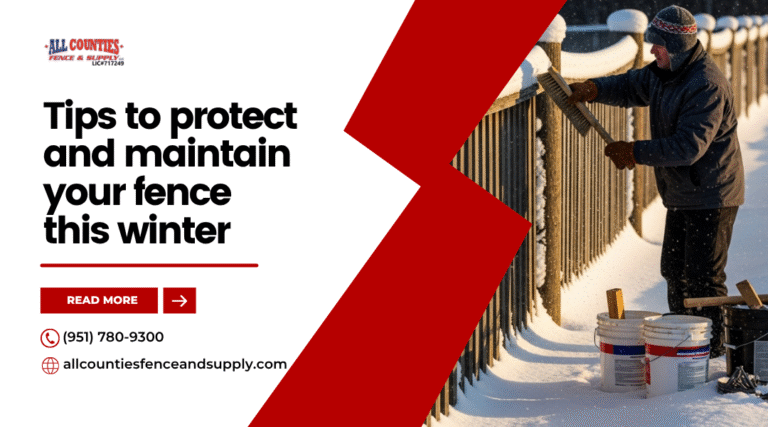Designing a custom horse corral in the Inland Empire requires more than just sturdy fencing—it demands an understanding of climate, terrain, and the needs of both horses and owners. You face unique challenges here, from arid weather to strict safety standards. A well-planned corral not only protects your animals but also enhances your property’s function and value.
In this case study, you’ll see how a local project turned a client’s vision into a durable and functional equestrian space. From the first design sketches to the final installation, every step focused on safety, longevity, and seamless integration with surrounding facilities such as mare motels. The process balanced practicality with aesthetics to create a space that performs well under everyday use.
You’ll gain insight into material selection, layout design, and installation methods that stand up to the Inland Empire’s demanding conditions. This project highlights how thoughtful planning and quality craftsmanship—hallmarks of All Counties Fence & Supply—can transform a concept into a reliable and attractive horse corral built to last.
Project Overview: Meeting The Client’s Vision
You needed a horse corral that balanced functionality, safety, and visual harmony with the surrounding Inland Empire property. The project required careful planning to address terrain conditions, meet local safety standards, and create a durable, low-maintenance environment for both horses and handlers.
The Property And Location
Your property sat on the outskirts of the Inland Empire, where open land and semi-rural zoning allowed flexibility for equestrian use. The site featured a mild slope, requiring grading to ensure proper drainage and stable footing for corrals and access paths.
The area’s dry climate and seasonal winds influenced material selection. Powder-coated steel panels and reinforced gates offered durability against dust and UV exposure. You also needed to maintain compliance with local planning and building codes, which emphasized animal safety and traffic visibility near public access points.
Surrounding land use included small farms, residential lots, and light commercial areas. This required a design that blended with both rural and suburban aesthetics—clean lines, neutral finishes, and efficient use of space. The final layout positioned the corrals for easy trailer access while maintaining privacy and minimizing noise for neighbors.
Initial Challenges (Terrain, Safety, Design Requirements)
The terrain posed the first major challenge. Uneven grading and compacted soil made it necessary to conduct a site assessment before foundation work began. You needed to ensure the corrals would remain level and structurally sound through seasonal shifts.
Safety requirements added complexity. The placement of fencing and gates had to prevent animal escape and minimize contact with vehicular areas. During planning reviews, engineers requested adjustments to fence height and setback distances to meet city safety standards.
Design requirements extended beyond compliance. The corrals needed to support daily activity, feeding, and occasional veterinary care. You prioritized visibility, airflow, and shade, ensuring horses could move comfortably while handlers maintained full supervision. The layout also accounted for future expansion, allowing additional stalls or a small tack shed without major reconstruction.
Goals For Functionality, Safety, And Aesthetics
You aimed to create a facility that worked efficiently while maintaining a clean, professional appearance. Functionality came first—corrals had to support routine care, feeding zones, and secure containment.
Safety guided every design choice. Rounded corners, smooth welds, and non-slip surfaces reduced injury risks. Proper drainage and ventilation helped maintain hygiene and animal health.
Aesthetics complemented the practical goals. You selected coordinated fencing colors, minimal visual clutter, and proportionate spacing between structures. The result was a cohesive, low-profile design that fit the Inland Empire’s landscape.
| Design Focus | Implementation Example |
|---|---|
| Functionality | Efficient gate placement and feeding access |
| Safety | Reinforced fencing, secure latches, proper setbacks |
| Aesthetics | Neutral finishes, consistent materials, clean geometry |
This combination of disciplined design and attention to detail ensured the project aligned with your expectations and the region’s standards for modern equestrian facilities.
Planning And Design Process
A successful horse corral project depends on accurate site evaluation, thoughtful layout planning, and compliance with local and equestrian standards. Each step ensures the structure functions safely, fits the property, and meets the daily needs of both horses and handlers.
On-Site Consultation And Custom Measurements
You start with a detailed site visit to record terrain features, soil conditions, and drainage patterns. These details influence the placement of posts, gates, and shelter areas. A level and well-drained surface reduces maintenance and prevents injury.
During measurement, you assess available space, horse population, and intended use—whether for boarding, training, or breeding. A corral designed for multiple horses requires wider lanes and reinforced corners to handle movement safely.
Use tools such as laser levels or digital mapping to capture precise boundary lines. This data helps you determine the correct panel lengths and gate widths, ensuring materials fit properly during installation. Consistent measurements also reduce cost overruns and rework.
Choosing The Right Layout For Horse Safety And Access
Your layout should balance safety, accessibility, and ease of daily operation. Horses need clear visibility and smooth traffic flow to minimize stress and conflict. Arrange gates at corners or along straight lines to promote natural movement.
Key layout considerations:
- Panel height: Minimum of 5 feet for adult horses.
- Gate width: At least 12 feet for vehicle access.
- Rounded corners: Prevent horses from getting trapped.
- Shelter orientation: Position to block prevailing winds.
You can design single or multiple paddocks depending on herd size. For example, a 40×60 ft pen suits one or two horses, while larger herds benefit from modular sections that allow flexible reconfiguration. Choose materials—steel, galvanized pipe, or powder-coated panels—based on durability and local climate.
Integrating Local Regulations And Equestrian Best Practices
Before construction, you verify that your design complies with county zoning laws, setback rules, and animal welfare codes. In the Inland Empire, spacing requirements often dictate minimum distances from property lines and water sources.
You should also apply equestrian design standards from organizations like the Missoula Technology and Development Center (MTDC), which emphasize safe footing materials, proper drainage, and accessible maintenance routes.
Include ventilation, shade structures, and manure management zones in your plan. These features not only meet regulatory expectations but also support horse health. Keeping documentation—permits, drawings, and inspection reports—helps you demonstrate compliance and streamline future upgrades.
Selecting The Right Materials For Longevity And Safety
Durability, weather resistance, and structural integrity determine how well your horse corral performs over time. The right material choice reduces maintenance, prevents injury, and ensures your investment withstands Inland Empire’s heat, dust, and seasonal moisture.
Why We Chose Steel Or Pipe Rail Fencing
You need fencing that resists impact, holds shape under pressure, and prevents horses from escaping or injuring themselves. Steel or pipe rail fencing offers the strength and rigidity necessary for large enclosures while maintaining a clean, professional look.
Unlike wood, which can warp or splinter, steel panels maintain alignment even after years of use. Welded joints provide consistent load-bearing capacity and reduce weak points. Pipe rail designs also allow for open visibility, improving safety during feeding or training.
| Feature | Steel/Pipe Rail | Wood | Vinyl |
|---|---|---|---|
| Strength | High | Moderate | Low |
| Maintenance | Low | High | Moderate |
| Lifespan | 20+ years | 5–10 years | 10–15 years |
Selecting pre-galvanized or powder-coated steel panels ensures additional protection against corrosion and mechanical wear.
Corrosion Resistance And Weather Durability In Inland Empire’s Climate
The Inland Empire experiences high summer temperatures, dry winds, and occasional rain, all of which can accelerate corrosion in untreated metals. You should choose materials that maintain structural integrity despite these conditions.
Galvanized steel offers a zinc coating that forms a barrier against moisture and oxidation. This layer prevents rust from spreading even when small scratches occur. For facilities closer to agricultural irrigation or with higher humidity, a powder-coated finish adds another layer of defense.
Proper drainage around posts and panels also reduces standing water, which can lead to premature rust. You extend the life of your corral by combining corrosion-resistant materials with good site preparation and routine inspections.
Low-Maintenance Finishes And Weld Quality Assurance
Low-maintenance finishes save time and reduce long-term costs. Powder coating provides a durable, uniform surface that resists chipping, fading, and peeling better than standard paint. It also minimizes the need for frequent touch-ups, which is important for large corrals.
You should verify that all welds meet structural standards and are free from porosity or incomplete fusion. Smooth welds lower the risk of sharp edges that could harm horses or handlers. Inspecting weld seams before installation helps ensure consistent quality across all corral panels.
Routine cleaning with mild detergent and water maintains surface integrity without stripping protective coatings. These steps collectively ensure your fencing remains safe, reliable, and visually consistent for years.
Installation: Turning The Plan Into Reality
A well-executed installation depends on accurate ground preparation, precise post alignment, and consistent oversight. Each step affects the stability, safety, and longevity of your corral system, especially when working with welded steel panels and variable terrain.
Site Preparation And Leveling For Uneven Ground
Start by marking the corral perimeter using stakes and string lines to define exact dimensions. Measure elevation differences across the site to identify high and low points. Uneven terrain in the Inland Empire often requires grading or compacted fill to achieve a stable, level base.
Use a skid steer or tractor with a box blade to remove debris and smooth the surface. Compact the soil with a plate compactor to reduce shifting after installation. For areas prone to drainage issues, add a slight slope—about 1 inch per 10 feet—to direct water away from animal areas.
If you plan to pour concrete footings, ensure forms are square and properly aligned before setting posts. A well-prepared surface simplifies later welding and alignment, reducing the need for adjustments.
Post-Setting, Welding, And Alignment Details
Set corner and gate posts first, as these define the corral’s geometry. Use galvanized steel or heavy-wall pipe for strength and corrosion resistance. Posts should extend at least 24 inches below grade for stability, secured with concrete or compacted gravel depending on soil type.
Align each post with a laser or string line before welding panels. Tack-weld temporary joints to confirm spacing and gate clearance, then finish with continuous welds once alignment is verified. Always check vertical and horizontal levels after each weld to prevent cumulative misalignment.
Use protective coatings or zinc-rich primers on welds to prevent rust. When connecting modular panels, confirm that hinges and latches operate smoothly before final tightening.
Timeline And Quality Control At Each Phase
Break the installation into clear phases: grading, post-setting, welding, and finishing. Assign realistic durations to each—typically 1–2 days for site prep, 2–3 days for post and panel installation, and 1 day for inspection and touch-ups.
Inspect welds for strength and uniformity, confirming no gaps or undercuts. Measure panel spacing to ensure consistent height and alignment. Keep a checklist for each phase:
| Phase | Key Checkpoints | Verification Method |
|---|---|---|
| Site Prep | Level ground, drainage slope | Laser level, visual check |
| Post-Setting | Depth, alignment | Tape measure, plumb line |
| Welding | Continuous, clean joints | Visual inspection |
| Final Review | Gate function, safety clearance | Operational test |
Record findings as you go to maintain accountability and ensure the finished corral meets structural and safety standards.
Final Results: A Durable And Functional Horse Corral
The completed corral combines strength, practicality, and visual balance. Every component—from the pipe panels to the gate hardware—was built to handle the Inland Empire’s dry summers and occasional heavy rains while maintaining a clean, cohesive look that fits the property’s layout.
Aesthetic Appeal And Cohesion With The Property
Your corral’s design aligns with the property’s existing structures and landscape. The galvanized steel panels provide a clean, uniform appearance that resists rust and blends with nearby fencing and barns.
Neutral tones and simple lines keep the space open and uncluttered. The layout follows the natural slope of the land, minimizing grading work and preserving the site’s character.
Key design elements:
- Matching panel height and spacing for visual consistency
- Powder-coated finish for long-term color retention
- Integrated shade structure for comfort and proportion
This attention to proportion and material choice ensures the corral looks intentional rather than added on. The result is a functional enclosure that enhances the property’s overall appearance without drawing unnecessary attention.
Safety Features And Ease Of Use For Horses And Owners
You gain peace of mind knowing the corral prioritizes both animal and handler safety. Heavy-duty 14- to 16-gauge steel tubing prevents bending or collapse, even under pressure. Smooth welds and rounded corners eliminate sharp edges that could injure horses.
The gate system uses secure latch mechanisms that you can operate with one hand, even while leading a horse. Panels are anchored to prevent shifting, reducing the risk of entanglement or escape.
Safety and usability details:
- Non-slip footing for stable traction
- Reinforced posts at stress points
- Proper spacing between rails to prevent hoof entrapment
Routine maintenance involves only periodic checks for loose fittings and occasional cleaning, keeping your workload manageable.
Before-And-After Highlights (Optional Image Section)
A side-by-side comparison shows how the new corral transformed an open area into a defined, efficient workspace. The before image might display uneven ground and temporary fencing, while the after image shows a stable, weather-resistant structure with organized access points.
Visual improvements include:
| Feature | Before | After |
|---|---|---|
| Fencing | Temporary wire | Custom steel panels |
| Ground | Uneven dirt | Leveled, compacted base |
| Access | Limited entry | Dual gates for flow |
This change not only improves daily handling but also adds measurable value to your property.
Client Feedback And Long-Term Performance
You can measure the success of a custom corral not only by its appearance but also by how well it performs over time and how satisfied the client remains after installation. Consistent feedback, maintenance data, and property impact all provide a clear picture of real-world results.
What The Client Said About The Process
You valued how the project team maintained open communication from design to installation. Regular progress updates and clear scheduling helped you plan around daily routines without disruption.
The client noted that site preparation, steel fabrication, and final assembly followed the agreed timeline. Every phase met safety and quality standards similar to those outlined in OSHA-based construction programs used by established builders in California.
You appreciated that the installers explained each step, including how to maintain finishes and inspect welds. This transparency built confidence that the structure would remain secure and functional for years.
| Feedback Aspect | Client Rating (1–5) | Comment |
|---|---|---|
| Communication | 5 | “Always informed and responsive.” |
| Quality of Work | 5 | “Solid build, precise welds.” |
| Timeliness | 4 | “Minor delay due to material delivery.” |
Maintenance Results After Months Of Use
After several months, you observed minimal wear despite daily exposure to sun and moisture. The galvanized steel resisted rust, and the gate latches operated smoothly without adjustment.
Routine cleaning and inspection every few weeks proved sufficient. You only needed to reapply protective coating on high-contact points, such as hinges and gate corners.
The team’s original safety guidance—checking fasteners and footing stability—helped prevent small issues from becoming structural problems. Compared to standard corrals, this installation required about 30% less maintenance time due to precise fabrication and proper drainage design.
| Maintenance Task | Frequency | Time Required |
|---|---|---|
| Cleaning | Weekly | 20–30 minutes |
| Hardware Check | Monthly | 15 minutes |
| Surface Protection | Semiannual | 1 hour |
How The Corral Added Property Value And Functionality
You noticed measurable improvements in both usability and property appeal. The corral’s modular layout allowed flexible use for horses, cattle, or temporary storage, increasing the land’s versatility.
Local appraisers estimated that a well-constructed steel corral can raise property value by 3–5%, especially when it complements existing fencing and stable structures.
Functionally, you gained safer animal handling zones and better movement flow. The design’s rectangular shape optimized space while maintaining visibility and ventilation.
The project also aligned with environmental considerations by minimizing material waste and using recyclable components, which can appeal to buyers looking for sustainable agricultural properties.
Lessons Learned And Best Practices For Future Corral Projects
Building a custom horse corral requires careful planning, accurate site preparation, and collaboration with skilled professionals. Attention to design details, material selection, and long-term maintenance ensures the structure remains safe, functional, and durable in Inland Empire’s climate.
Key Takeaways For Homeowners Planning A Corral
You should start with a clear understanding of your horses’ needs and the property’s layout. Evaluating drainage, soil type, and prevailing wind direction helps prevent water pooling and uneven footing.
Create a simple but complete plan that includes fence height, gate placement, and access for vehicles or equipment. Documenting these details early reduces costly changes later.
Use a small checklist to stay organized:
| Task | Purpose |
|---|---|
| Measure site accurately | Avoid misaligned panels |
| Confirm local codes | Ensure compliance |
| Budget for maintenance | Plan for long-term costs |
Choosing materials rated for outdoor exposure, such as galvanized steel or pressure-treated wood, adds years to the corral’s lifespan.
Common Mistakes To Avoid
Many homeowners underestimate the importance of grading the site before construction. Uneven ground leads to unstable posts and drainage issues that shorten the fence’s life.
Avoid using low-quality fasteners or untreated wood, which can weaken under Inland Empire’s heat and moisture fluctuations. Skipping a soil compaction check can also cause shifting or leaning panels.
Another frequent error is neglecting future expansion. If you plan to add stalls or paddocks later, design the layout with room for growth. Installing corner posts and gates with expansion in mind saves both time and money.
Finally, document lessons learned from each phase. A brief record of what worked and what didn’t will guide improvements for future builds.
Importance Of Working With Experienced Fence Contractors
Hiring a contractor familiar with equine enclosures ensures proper installation and compliance with safety standards. Experienced teams understand how to space rails, secure gates, and select materials that meet animal behavior requirements.
They can identify potential hazards, such as sharp edges or improper post depths, before they become problems. Contractors also manage permits and inspections efficiently, reducing project delays.
When evaluating professionals, ask for references, review past corral projects, and confirm licensing and insurance. A reliable contractor provides transparent pricing, clear timelines, and post-installation support, giving you confidence that the structure will perform as intended for years.




